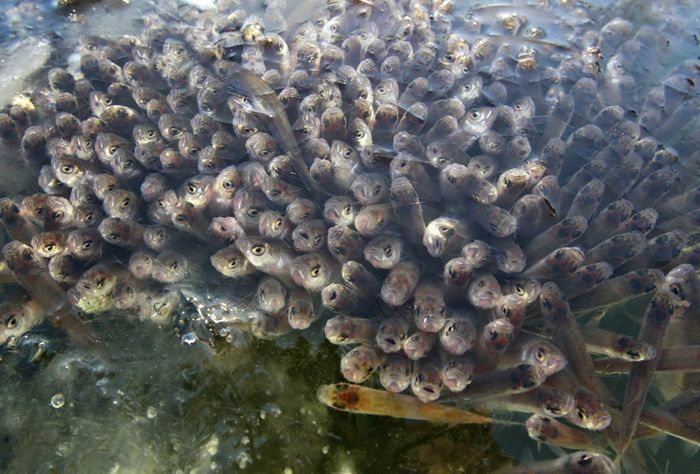|
|
Fish Tries To Get Oxygen, St. Petersburg, Russia
|
The notothenioids all lack a swimbladder, and the majority of species are therefore benthic or demersal in nature. However, a depth-related diversification has given rise to some species attaining increased buoyancy, using lipid deposits in tissues and reduced ossification of bony structures.
Notothenioids have evolved a variety of interesting physiological and biochemical adaptations that either permit survival in, or are possible only because of, the generally cold, stable seawater temperatures of the Southern Ocean. Many Notothenioid fish are able to survive in the freezing, ice-laden waters of the Southern Ocean because of the presence of an antifreeze glycoprotein in blood and body fluids. Although many of the Antarctic species have antifreeze proteins in their body fluids, not all of the Antarctic species do. Some sub-polar species either produce no or very little antifreeze, and antifreeze concentrations in some species are very low in young, larval fish. Another interesting aspect of Notothenioid physiology is that while the majority of animal species have up to 45 % of hemoglobin (or other oxygen-binding and oxygen transporting pigments) in their blood, the Notothenoids of the family Channichthyidae have only 1%. These fish are able to survive without large amounts of hemoglobin in part because of the high oxygen content of the cold waters of the Southern Ocean, and in part because oxygen is absorbed and distributed directly by the plasma.
The notothenioids are generally considered to be the only marine fish species flock.
Comparing the genomes of Notothenioidei, which lack red blood cells, to close relatives such as the Antarctic rockcod has revealed genes needed to make these blood cells.
|
|









